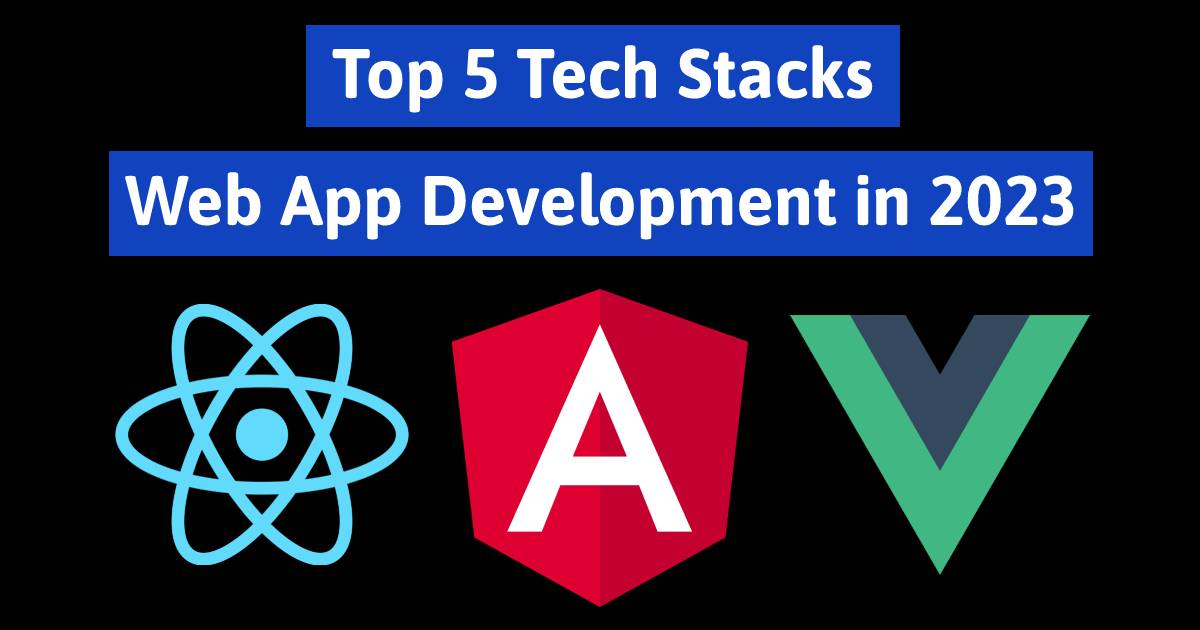A tech stack is the combination of technologies and tools used to develop and run software applications or a website. It typically includes a mix of programming languages, frameworks, databases, and other tools that work together to deliver the desired functionality and performance.
All developers and companies must have the proper knowledge about each tech stack before beginning their journey in building a web app. Knowing this will have significant impact on the performance, scalability, and maintainability of the application.
There are several factors you must consider before choosing the right tech stack for your product.
- Know the needs and features required.
- Which technology is most relevant to your business.
- Consider the pros and cons of all popular tech stacks.
Here are the top 5 tech stacks for web development in 2023.
1. MERN Tech Stack
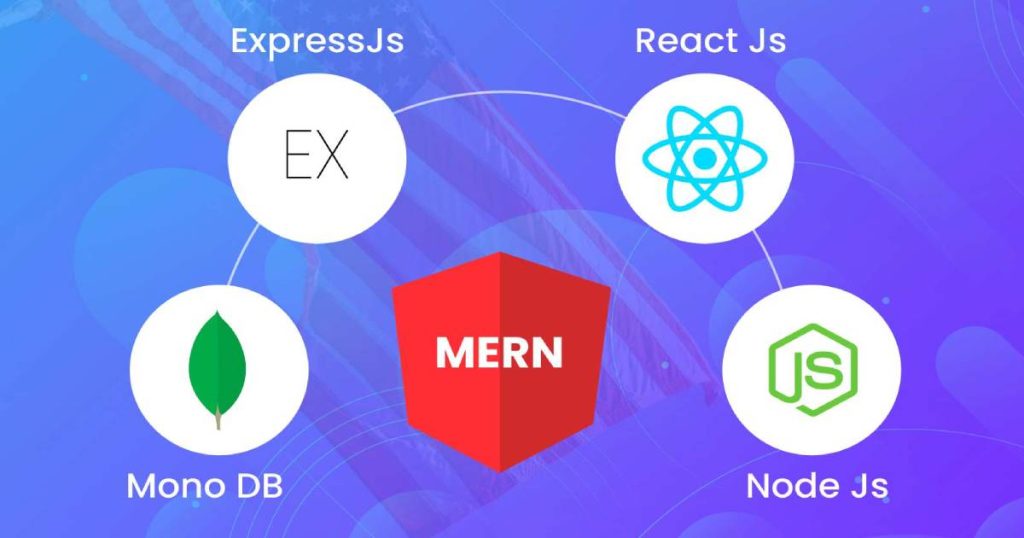
The MERN tech stack consists of four technologies: MongoDB, Express.js, React.js, and Node.js.
The acronym MERN was coined by Facebook (Meta) as an alternative to MEAN which was coined by Valeri Karpov in 2013.
MERN is one of the most demanded in 2023, it is similar to other tech stacks like MEAN and MEVN, the only difference between the three is that MERN uses React.js for the frontend while MEAN uses Angular.js and MEVN uses Vue.js.
Pros of MERN
- It is cost-effective, since it is open-source software there are no licensing fees.
- Uses JavaScript as the primary programming language (most popular language).
- Uses React.js for the frontend framework (most popular framework).
- The biggest developer community and documentation for MongoDB, Express.js and Node.js.
- Has a strong library source for backend and frontend. You can use the code on both the servers and browser all at one time, increasing efficiency.
- Designed to scale well and easily handle large amounts of traffic and data.
- Very flexible that can work with a range of web applications, from simple to complex.
Cons of MERN
- Steep learning curve, especially for new developers.
- Limited server-side rendering which can impact the performance of apps, especially those with complex user interfaces.
- It is prone to SQL injections and XSS attacks.
Companies that use MERN
- Facebook (Meta)
- Tesla
- GoDaddy
- Walmart
- Shutterfly
- Under Armour
- Accenture
- Philips
- Airbnb
- Netflix
- Mozilla
2. MEAN Tech Stack
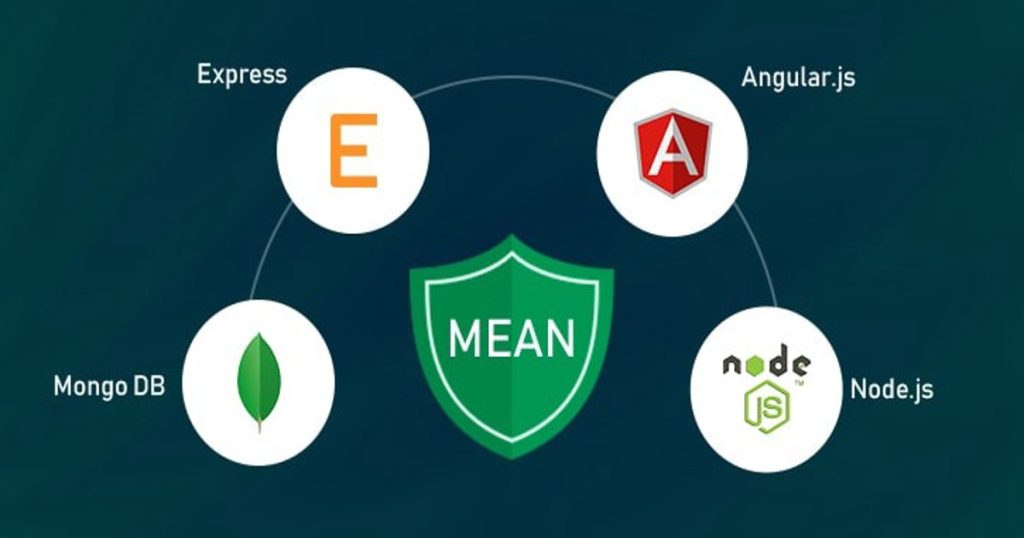
The MEAN tech stack consists of four technologies: MongoDB, Express.js, Angular.js, and Node.js.
The acronym MEAN was coined by Valeri Karpov in 2013.
The difference between MERN and MEAN is the frontend framework. MERN uses React.js and MEAN uses Angular.js. Both frameworks work great, so it comes down to personal preference, but here are some quick facts.
React.js is a free and open-source front-end JavaScript library for building user interfaces based on UI components. It is maintained by Facebook (Meta) and has a community of 5.7 million individuals and corporations.
AngularJS is a free and open-source JavaScript-based web framework for developing single-page applications. It is maintained by Google and has a community of 1.7 million individuals and corporations.
Companies that use MEAN
- Microsoft
- IBM
- Amazon
- Uber
- PayPal
3. MEVN Tech Stack
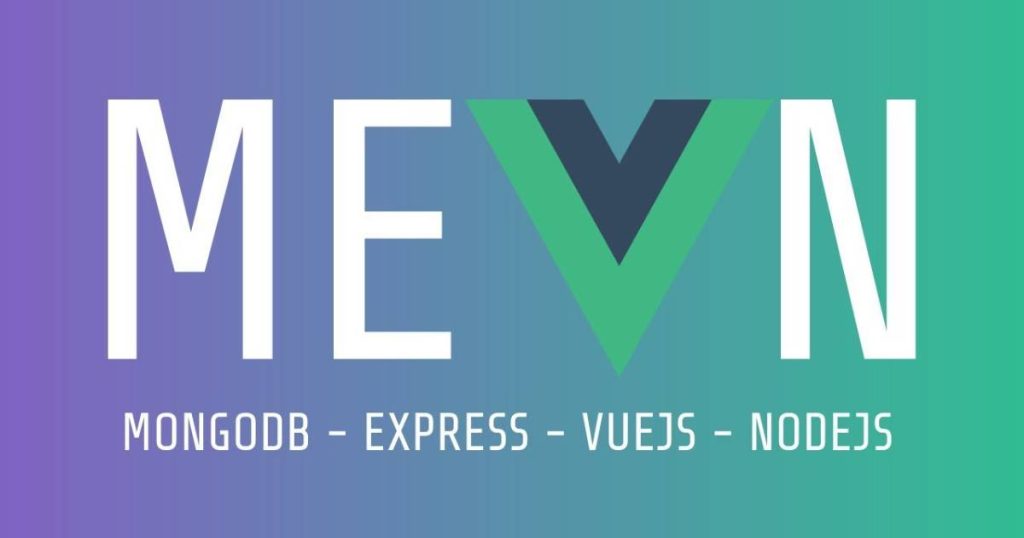
The MEVN tech stack consists of four technologies: MongoDB, Express.js, Vue.js, and Node.js.
The acronym MEVN was coined by Evan You as an alternative to MEAN which was coined by Valeri Karpov in 2013.
The difference between MERN and MEVN is the frontend framework. MERN uses React.js and MEVN uses Vue.js. Both frameworks work great, so it comes down to personal preference, but here are some quick facts.
React.js is a free and open-source frontend JavaScript library for building user interfaces based on UI components. It is maintained by Facebook (Meta) and has a community of 5.7 million individuals and corporations.
Vue.js is an open-source model–view–viewmodel frontend JavaScript framework for building user interfaces and single-page applications. It is maintained by its creator Evan You and his team and has a community of 167,000 individuals and corporations.
Companies that use MEVN
- Alibaba
- Xiaomi
- Tencent
- Baidu
- ByteDance
- JD
- Pinduoduo
- Huawei
4. LAMP Tech Stack
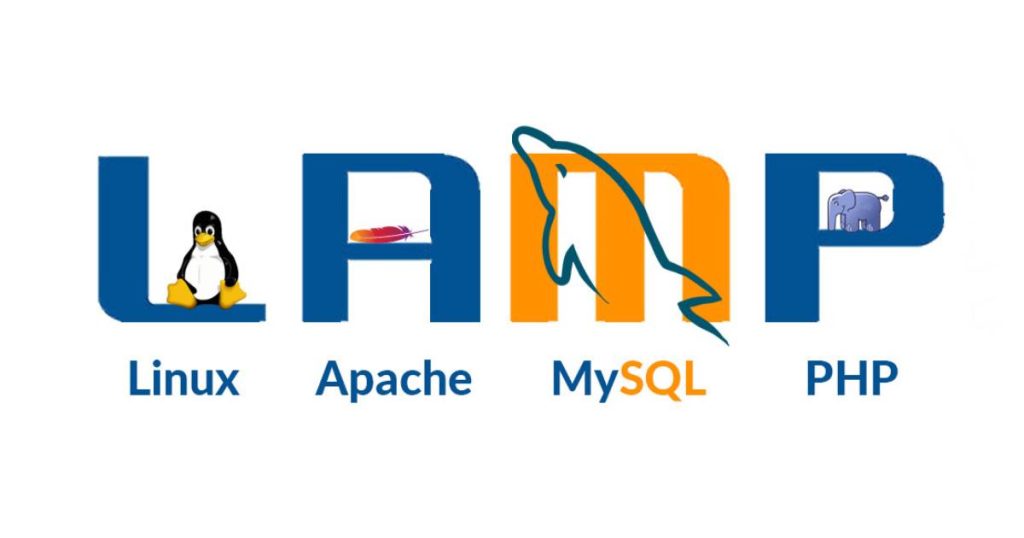
The LAMP tech stack consists of four technologies: Linux, Apache, MySQL, and PHP.
The acronym LAMP was coined by Michael Kunze in the December 1998.
The term and the concept became popular because it was one of the first open-source software stacks for the web, with sufficient capabilities to host a variety of web frameworks, such as Joomla, WordPress and Drupal.
Pros of LAMP
- It is cost-effective, since it is open-source software there are no licensing fees.
- Even though it is the first and oldest tech stack, it is considered reliable, stable, and secure.
- Large community of developers and resources.
- It is flexible, easy to set up, and scalable.
- It is well suited for e-commerce platforms, content management systems (CMSs), and custom web applications.
- Used by many small and large organizations.
Cons of LAMP
- It is 25 years old, so some of the technologies used are outdated.
- Even though it is considered secure, it is still vulnerable to threats and attacks.
- Slow performance when compared to MERN, MEAN, or MEVN. This can be an issue when building applications that require high performance and low latency.
- Since it is uses PHP, which is a server-side scripting language, it has some limitations when compared to JavaScript.
Companies that use LAMP
- Wikipedia
- Yahoo
- Etsy
- Shopify
- WordPress
- Magento
5. Serverless/Jamstack Tech Stack
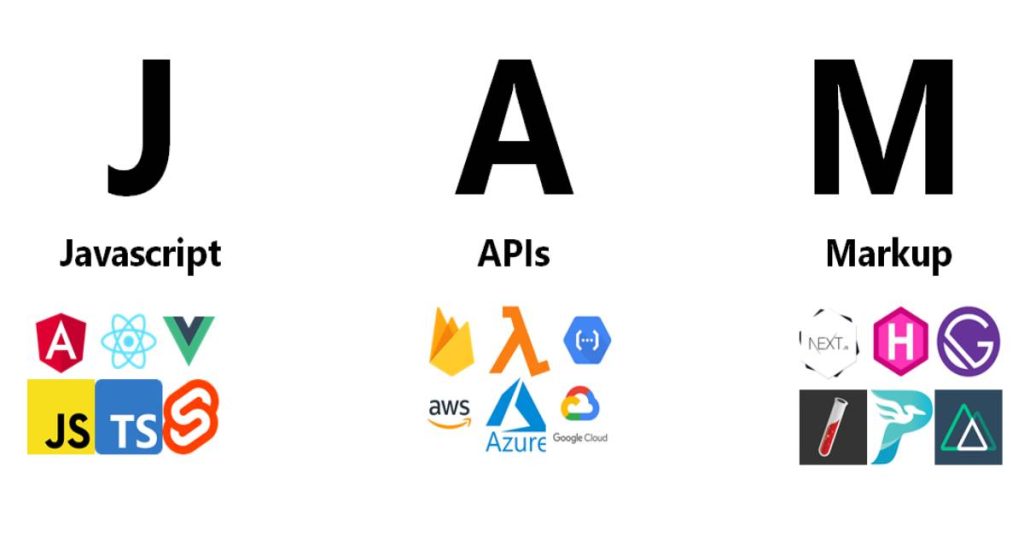
This particular tech stack has broken all the previous tech stack traditions. Serverless stacks are those where the developer can write and completely execute the code without worrying about managing infrastructure.
Some serverless services are:
- Function-as-a-Service (FaaS)
- Backend-as-a-Service (BaaS)
- Static Site Generators (SSGs)
- Event-driven Computing
You can build and run applications and services without worrying about provisioning, scaling, or managing servers. Instead, the infrastructure is managed by cloud providers such as Amazon Web Services (AWS), Google Cloud Platform (GCP), or Microsoft Azure.
The most common serverless tech stack is Jamstack. Jamstack is a web development architecture pattern and solution stack. The initialism “JAM” stands for JavaScript, API and Markup and was coined by Mathias Biilmann in 2015.
Jamstack relies heavily on serverless technologies such as Function-as-a-Service (FaaS) and Backend-as-a-Service (BaaS).
Pros of Jamstack
- Fast performance since the servers are managed by the cloud providers. The results users see will be fast, regardless of their location.
- Cost-effective since they don’t need a backend server to run, which reduces the hosting and maintenance costs.
- Highly scalable to handle high traffic without requiring significant resources or investments in infrastructure.
- More secure than traditional server-side web applications, due to the fact that they don’t have a backend server to attack.
- Better development experience, allowing the developers to focus on writing code instead of managing servers and infrastructure.
Cons of Jamstack
- Limited server-side functionality such as processing form submissions or sending email, which can be challenging to implement specific types of functionality.
- Since serverless technologies depend on APIs for data and functionality, if there are any issues with the APIs it can be slow or cause downtime.
- Even though serverless tech stacks use caching to improve performance, it can limit their ability to display dynamic content.
- Increased complexity since you are working with multiple services and functions and need to integrate them correctly, which makes it harder to maintain.
Companies that use Jamstack
- GitHub
- Netlify
- Smashing Magazine
- Stack Overflow
- Stripe
- Big Cartel
Bonus: FERN Tech Stack
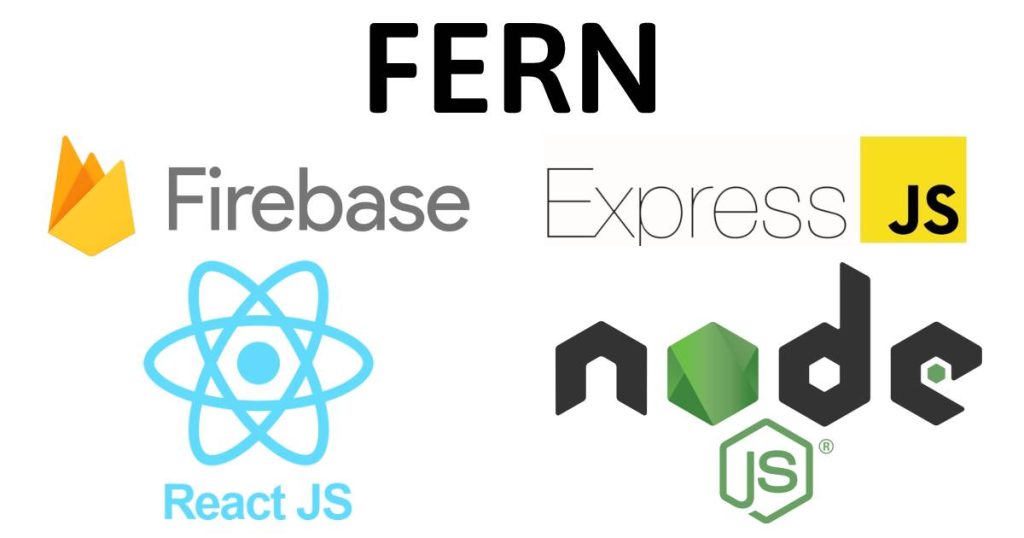
The FERN tech stack consists of four technologies: FirebaseDB, Express.js, React.js, and Node.js.
The difference between FERN and MERN is the database. FERN uses FirebaseDB and MERN uses MongoDB. Both databases work great, so it comes down to personal preference, but here are some quick facts.
MongoDB is a NoSQL database management system released in 2009.
Pros of MongoDB
- Flexible and scalable data structures, easy to store and query data and reduces the need for data normalization.
- Designed for high performance, even with large amounts of data.
- Easily scalable, allowing it to grow as the app gets more volume.
Cons of MongoDB
- Does not support complex transactions.
- Limited support for secondary indexes, making it difficult to search data in large collections.
- Requires manual sharding to scale horizontally, which is time-consuming and complex.
Companies that use MongoDB
- eBay
- Walmart
- FedEx
- The New York Times
- SAP
- Cisco
- Viacom
- ING Bank
- Bosch
- MetLife
FirebaseDB is a cloud-based, NoSQL database service owned by Google and released in 2011.
Pros of FirebaseDB
- Has real-time data syncing, which make sit a good choice for apps that need real-time updates.
- It has a simple and intuitive API, making it easy for developers to get started using it.
- Provides built-in authentication, which helps reduce the time and effort required to implement this type of feature.
Cons of FirebaseDB
- It does not support ad-hoc querying, making it difficult to find specific data in large collections.
- Firebase is a paid service, and the price can increase as the application grows.
- Since Firebase is a managed service by Google, there is limited ability to customize the infrastructure.
Companies that use FirebaseDB
- Lyft
- Airbnb
- Snapchat
- Alibaba
- SoundCloud
- CircleCI
- Canva
- Shopify
Final Thoughts
Now the moment you have been waiting for! Drum roll, please 🥁. Here is our honest opinion, our personal favorite has always been MERN. Mainly due to its popularity, scalability, flexibility, efficiency and reliability (we are also big fans of React ❤️).
We would like to give a shoutout to FERN too, even though not heavily used as MERN, we believe it could one day reach its popularity.
We hope that this article was helpful, and that you now have a better idea about which is the best tech stack to use for your web app.
If you are ready and interested in developing a web app, you can always contact us to help you build it.






